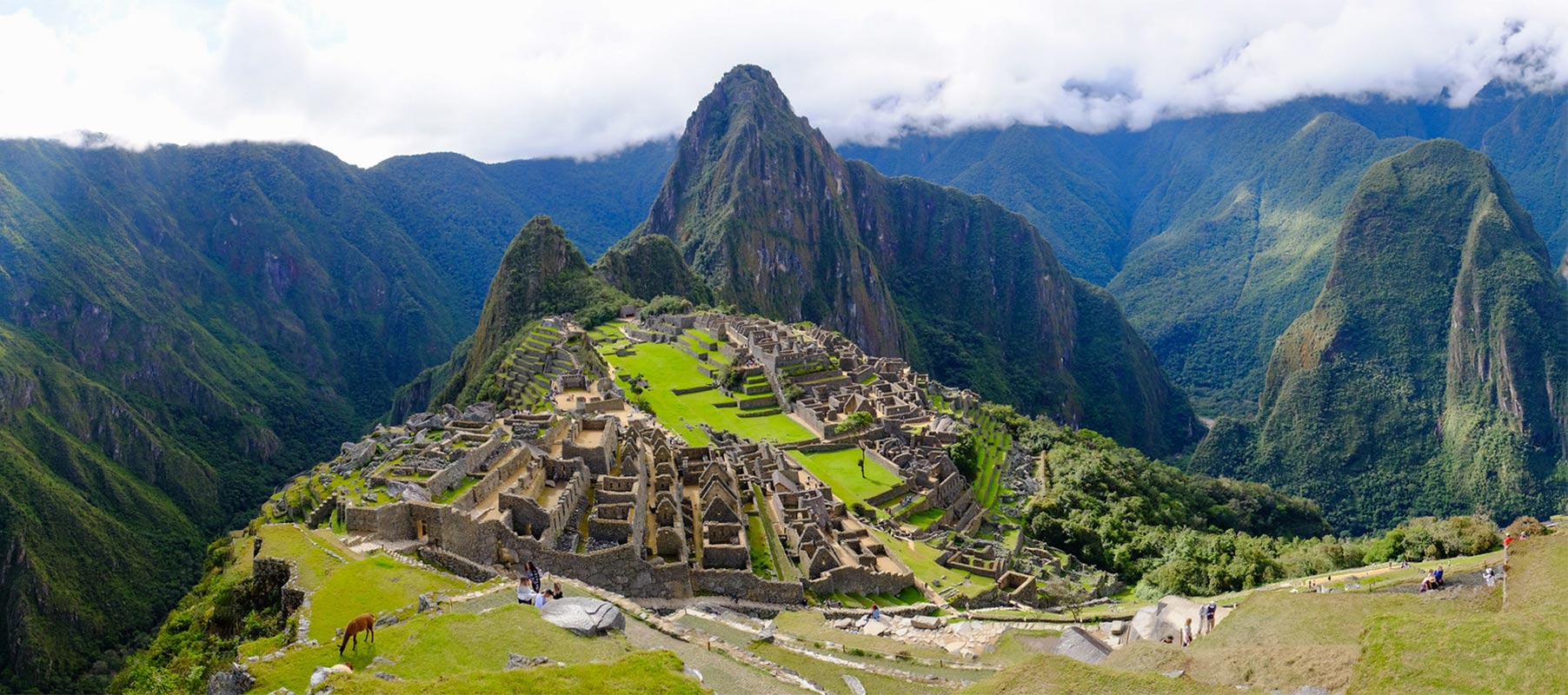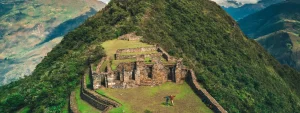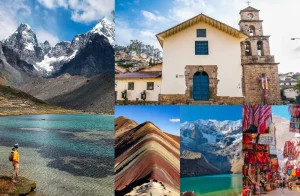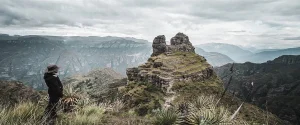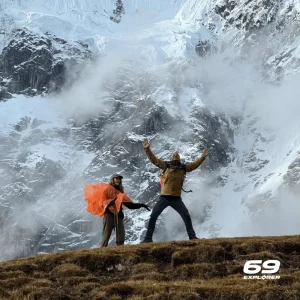Are you planning to visit Machu Picchu?
There are new circuits at Machu Picchu (applied since June 2024). They were introduced mainly to protect the citadel and improve the visitor experience. UNESCO and conservation studies highlighted the need to reduce erosion and congestion in high-traffic areas, so authorities created fixed routes, shorter visit times, and stricter entry slots. This system also responds to the huge demand, around 1.5 million visitors per year.
Daily entry is capped at 4,500 people in low season and up to 5,600 on peak dates. Tickets must be booked in advance through the official platform or a credited travel agent.
How does it work?
If you are booking for yourself: you have to choose a specific circuit and time slot; late arrivals risk losing entry, and reentry is not allowed.
If you are booking a tour: your company will be in charge of all the process. Usually you will have to ask for the desired dates and experience (Inca Trail, Machu Picchu Tours, Alternative Treks), then your agent will arrange all for you. You can check our availability and booking process here.
What does the tickets include?
Usually your ticket will include your entrance to the specific circuit you chose. There are some tickets include access to extra hikes like Huayna Picchu or Machu Picchu Mountain, which sell out quickly.
Machu Picchu circuits:
Circuit 1 or Panoramic
- Circuit 1 A is for those who wish to hike to Machu Picchu Mountain. First you will hike to the Guardhouse above Machu Picchu, here you will get the perfect postcard pictures of Machu Picchu. The hike to Machu Picchu Mountain is around 3 hours round trip and is considered a moderate to difficult hike.
- Circuit 1 B This is the shortest route at Machu Picchu. The hike includes the Guardhouse for great photo opportunities of the ancient Inca citadel. Spend time enjoying the views spread before you.
- Circuit 1 C is reserved for those who want to hike up to the Sun Gate or IntiPunku. The hike is about 2 hours roundtrip. The views of Machu Picchu are magnificent so be sure to have plenty of space on your phone to take photos. The gate was reserved for Royality and Nobles and you will see why when you take in the views of Machu Picchu.
- Circuit 1 D for those who want to visit the Inca Bridge, this fascinating trek takes you past the beautiful scenery of the Andes and also the views of Machu Picchu are breathtaking.

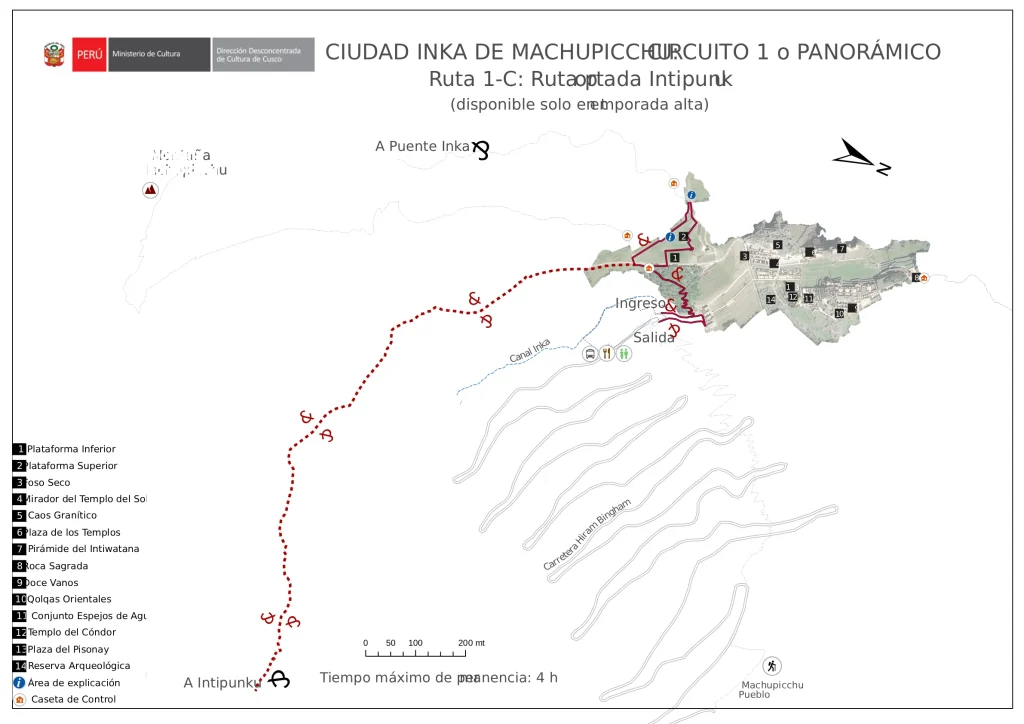
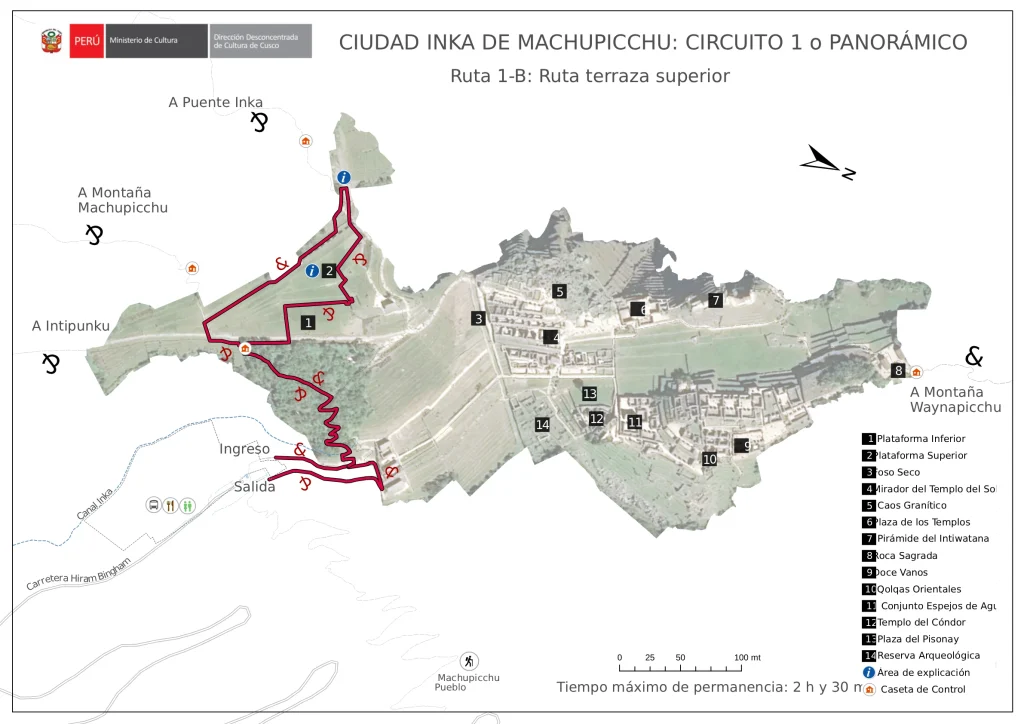
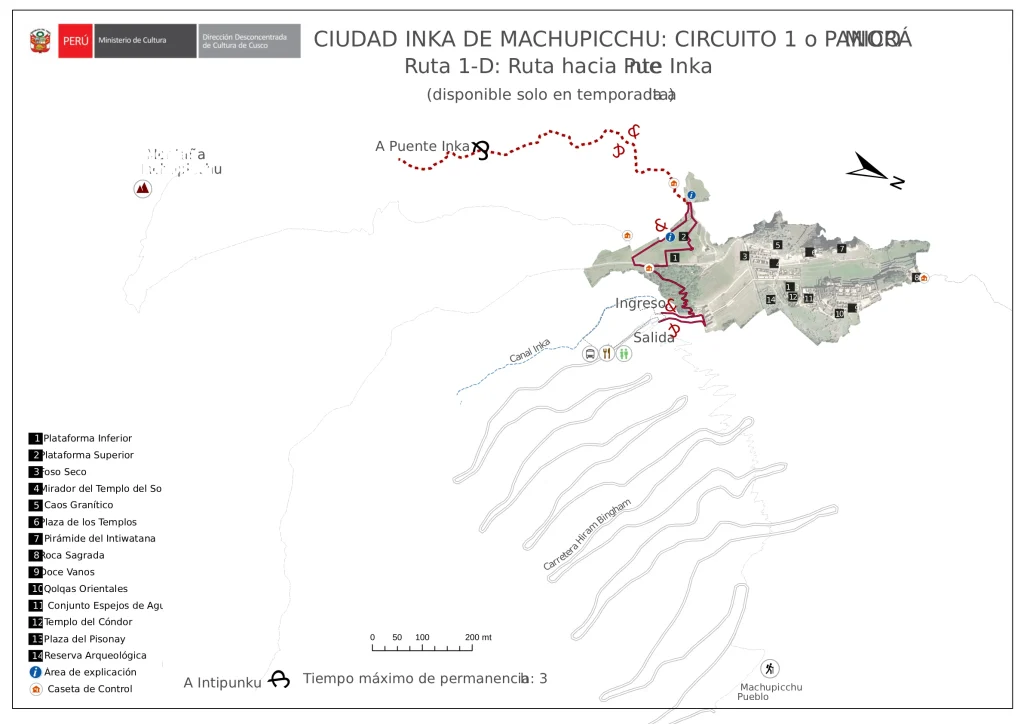
Circuit 2 or INKA CITY CIRCUIT
Considered the Best Circuit Machu Picchu!
- Circuit 2A traditionally was the most popular with day trippers, as this Circuit explored the most sites of the ruin and includes the best views from the Guardhouse. The sites that Circuit 2 includes are Temples, Plazas, The Sacred Rock, Temple of the Condor and the Pisonay Plaza, to name a few.
- Circuit 2B, includes mostly the same sites as 2A without the viewpoints
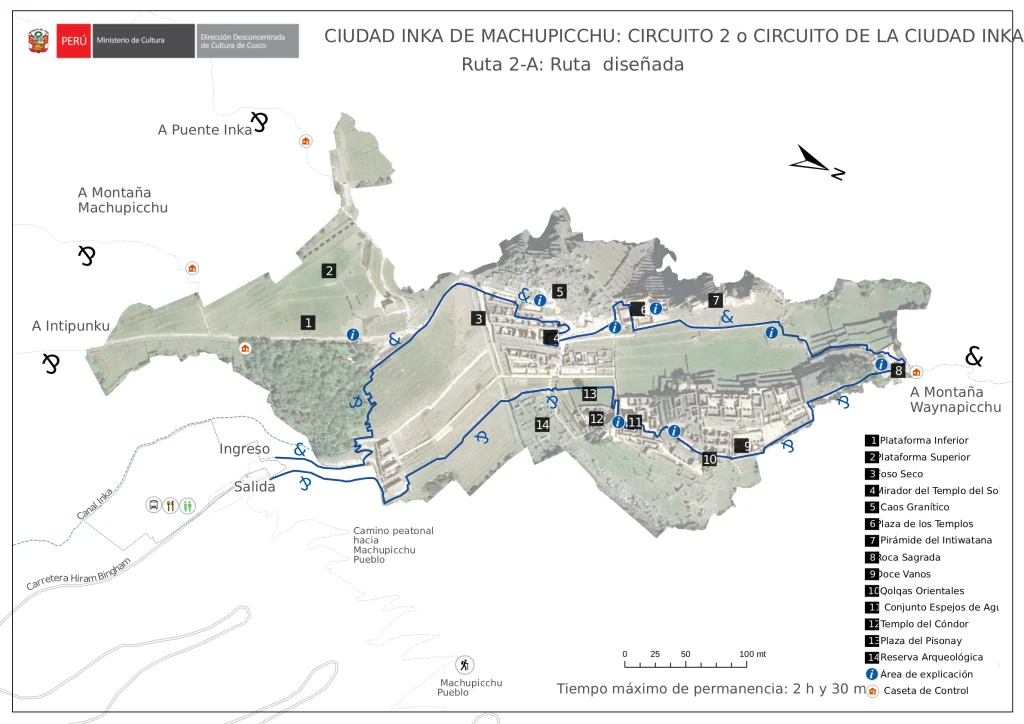
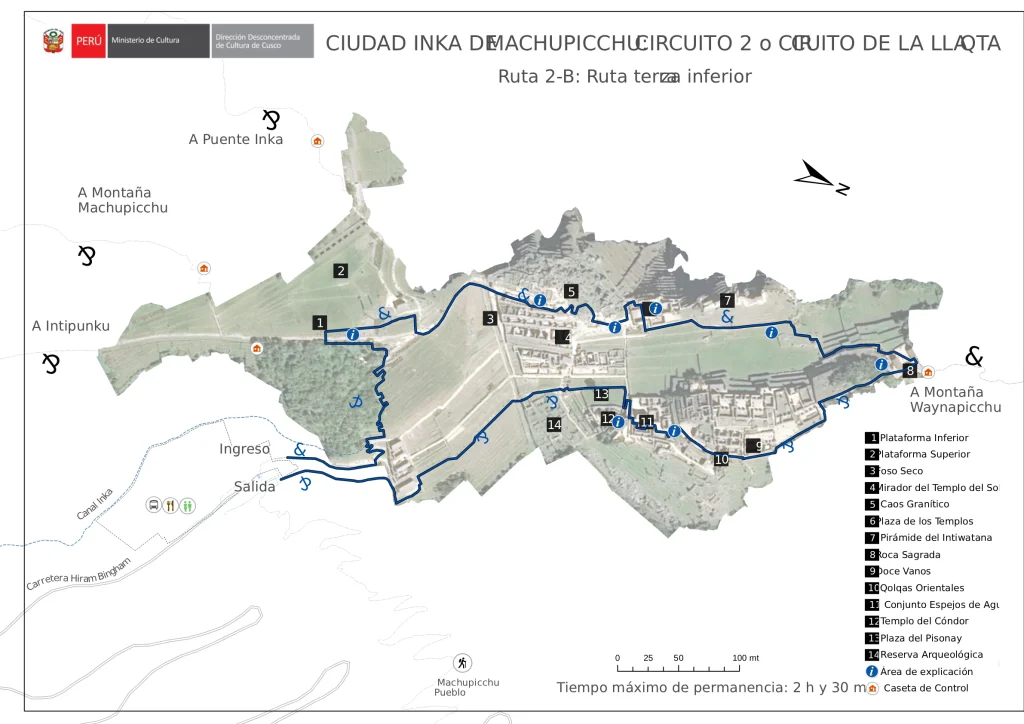
Circuit 3: Machu Picchu City & Huayna Picchu
- Circuit 3A this will include the lower part of Machu Picchu, not including the Guardhouse view point of Machu Picchu. This circuit is used by all 1, 2, 4 and 5 Inca Trail hikers. Sites you will see on Circuit 3 are The Stone Houses, The Farming Terraces, The Water Mirrors, The Temple of the Sun, The Work Shops, The Temple of the Condor, The Inca House and the Royal Houses.
- This circuit also can be combined with the extra hike up to Huayna Picchu mountain (usually extra fee $75). This is the cone shaped mountain that you see in all the postcards. The hike roundtrip is 2 hours.
- Circuit 3B, this circuit includes the lower part of Machu Picchu only. Visit the sites of Temple of the Sun, The Inca House and the Temple of the Condor. You will need a guide to complete your tour of Machu Picchu.
- Circuit 3C, again this circuit visits the lower part of Machu Picchu including the sites mentioned above. Plus a visit to the Big Cave (templo of the moon), this applies ONLY if you have Huyna Piccu tickets.
- Circuit 3D, this circuit take you to Huchuy Picchu Mountain. A short hike that is new to the Machu Picchu area. The site has great views and does not take a lot of effort. As part of circuit 3D you will visit the lower part of Machu Picchu with a guide
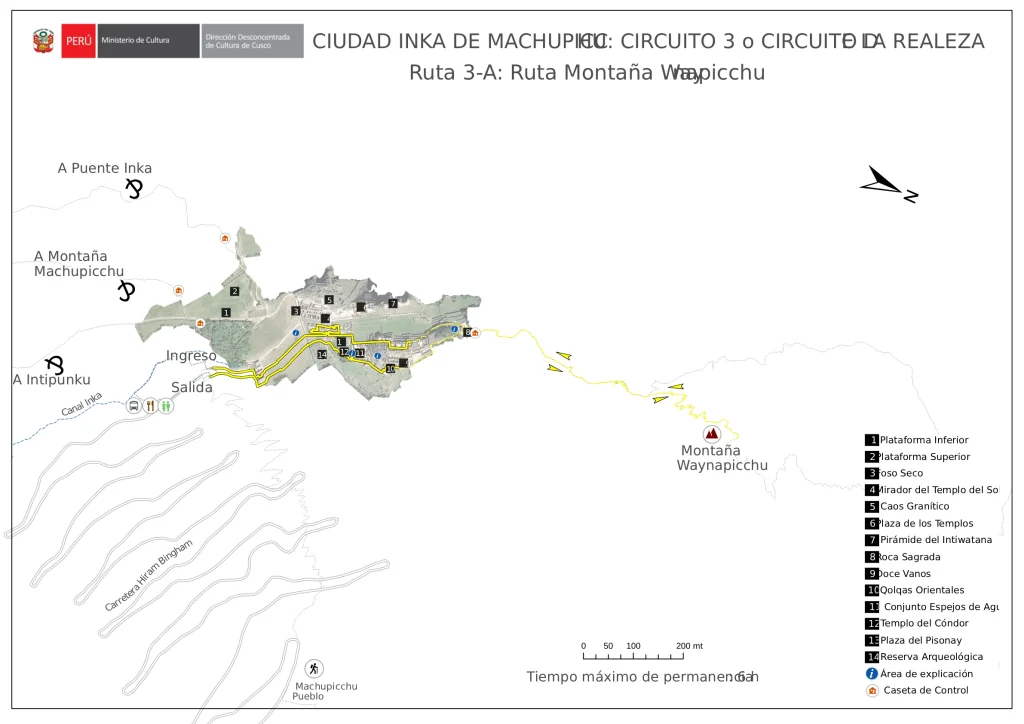

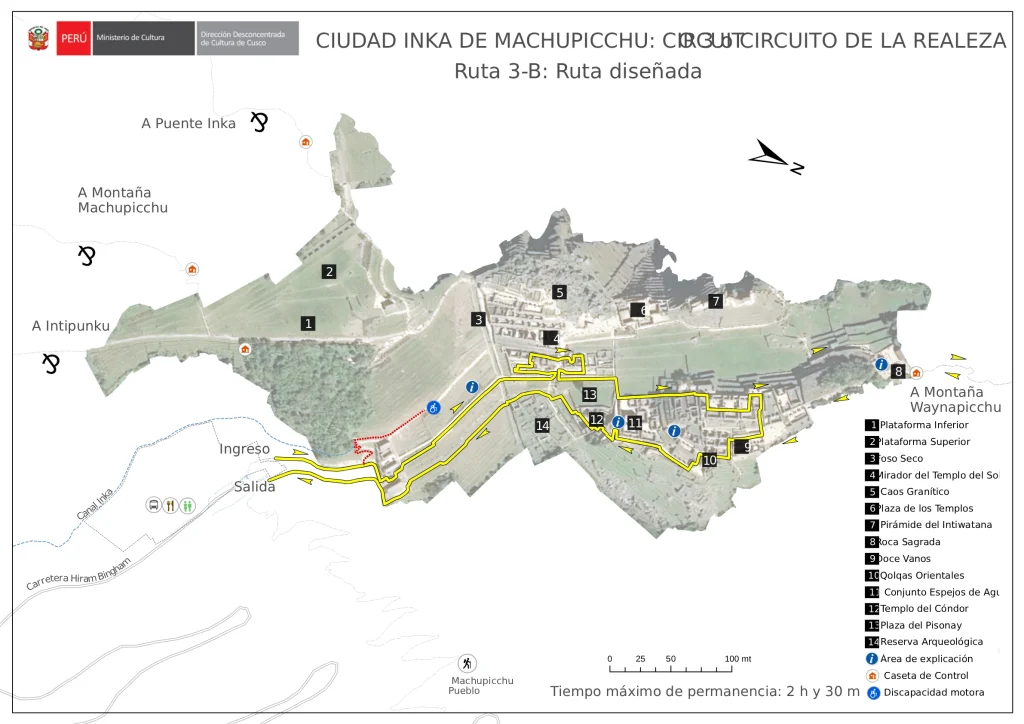

Note:
Circuits 1A, 1B 1C, 1D, do not include the entrance and tour of the ruins of Machu Picchu, if you wish to explore Machu Picchu you will need a guide and another entrance ticket. This information is correct as of 12 June 2024. We appreciate your understanding on this matter, this is something that is out of our control but we will do our best to ensure that your trip to Peru and Machu Picchu will be the adventure of a lifetime.

